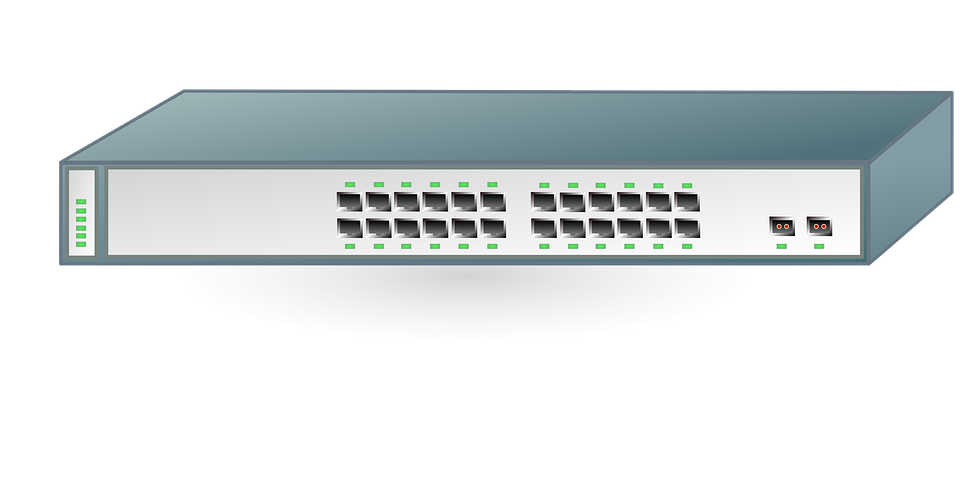Transitioning from hourly to project-based pricing can significantly impact your business, offering potential for increased profitability and client satisfaction. This guide provides a structured approach to navigating this crucial shift, equipping you with the knowledge and tools necessary for a successful transition.
Understanding the fundamental differences between these pricing models, defining clear project scopes, and managing client communication are pivotal steps in this process. This guide explores each stage in detail, offering practical examples, tables, and strategies to ensure a smooth and profitable transition.
Understanding the Shift

Transitioning from hourly to project-based pricing represents a significant shift in business strategy. This change demands careful consideration of the financial implications, potential benefits, and inherent risks. Understanding the nuances of each pricing model is crucial for a successful transition.
Fundamental Differences
Hourly pricing models typically involve charging clients for time spent on tasks. Project-based pricing, conversely, focuses on delivering a defined scope of work for a pre-agreed price. This fundamental distinction dictates how revenue is generated and how project profitability is measured. The project-based approach necessitates a greater emphasis on upfront planning, resource allocation, and risk management.
Financial Implications
The financial implications of each model differ considerably. Hourly pricing allows for predictable short-term revenue streams, but potential revenue is tied to the time spent. Project-based pricing, while potentially offering higher profit margins per project, demands accurate estimations of project duration and resource requirements. A key factor is the potential for fluctuating revenue streams in the project-based model.
Benefits and Drawbacks of Transitioning
Shifting from hourly to project-based pricing offers several potential benefits. Project-based models often allow for greater profit margins per project due to the pre-defined scope of work. This approach also fosters clearer communication and expectations with clients, improving project predictability and potentially reducing client disputes. However, there are drawbacks. Project-based pricing requires meticulous project planning and risk assessment.
Accurately estimating project timelines and resource needs is critical to avoiding financial losses.
Factors to Consider When Evaluating a Shift
Several key factors must be considered when evaluating a shift to project-based pricing. Firstly, understanding the specific types of projects suitable for this model is crucial. Secondly, the client base and their willingness to engage in project-based contracts must be evaluated. Finally, the company’s internal capacity for project management and risk assessment needs careful evaluation. Internal processes and resource availability must be assessed to ensure smooth implementation.
Suitable Project Types
Certain types of projects are more amenable to project-based pricing than others. Projects with clearly defined deliverables, estimated timelines, and a manageable scope of work are ideal candidates. Examples include website development, software design, marketing campaigns, and research projects with predetermined outcomes. Projects with fluctuating or undefined scopes are less suitable for this pricing model.
Hourly vs. Project-Based Pricing Comparison
| Pricing Model | Payment Schedule | Client Predictability | Project Scope | Business Risk |
|---|---|---|---|---|
| Hourly | Recurring, based on time | High, but often limited to project timeline | Flexible, but less predictable | Low, but potentially limited profit margins |
| Project-Based | Fixed, upon project completion | High, due to pre-defined scope and deliverables | Defined, with a clear scope of work | Moderate to high, depending on project complexity and accuracy of estimations |
Defining Project Scope and Deliverables

Defining a clear project scope and outlining deliverables is crucial for successful project-based pricing. This ensures transparency for clients and provides a roadmap for both parties, minimizing potential misunderstandings and disputes. A well-defined scope establishes the boundaries of the project, ensuring everyone is on the same page regarding the project’s objectives and expected outcomes.A robust project scope definition fosters trust and collaboration between the service provider and the client.
By clearly articulating what’s included and excluded, the project becomes less prone to scope creep, a common pitfall in project management. This, in turn, helps maintain project timelines and budgets, leading to a more positive experience for all involved.
Methods for Defining Project Scope
Clearly defining project scope for clients requires a structured approach. First, gather detailed information about the client’s needs and objectives. Active listening and thorough questioning are essential to understanding the project’s goals and expectations. Second, document the agreed-upon deliverables and the expected outcomes. A well-structured project proposal or agreement will serve as a common understanding document.
Finally, identify any potential constraints or limitations. This includes factors such as budget, timelines, resources, and available technology.
Documenting Deliverables in a Project Agreement
A comprehensive project agreement should meticulously document all deliverables. This document serves as a legally binding contract and a reference point throughout the project. Deliverables should be described with specificity and clarity, avoiding ambiguity. Each deliverable should be measurable, verifiable, and achievable. Quantifiable metrics and specific timelines should be incorporated for each deliverable.
For example, instead of “a website,” a more specific deliverable would be “a fully functional e-commerce website with a shopping cart, user accounts, and secure payment gateway, as per the attached wireframes.”
Examples of Project Scope and Deliverables Documents
A sample project scope document might include sections outlining the project’s goals, tasks, timelines, and budget. The deliverables section would detail each deliverable with clear descriptions, expected completion dates, and acceptance criteria. A project proposal, on the other hand, often Artikels the project’s scope, deliverables, pricing, and project management methodology. These documents can vary significantly depending on the nature of the project and the client’s requirements.
Essential Clauses for Project Contracts
Essential clauses in project contracts include, but are not limited to, project scope, deliverables, payment terms, timelines, termination clauses, and dispute resolution mechanisms. These clauses clearly define the responsibilities and obligations of both parties, providing a framework for the project’s successful execution.
“Clear contracts prevent misunderstandings and facilitate a smoother project lifecycle.”
Breaking Down Large Projects
Large projects can be overwhelming. To manage complexity effectively, break them down into smaller, manageable tasks. This allows for more efficient time management and resource allocation. Use work breakdown structures (WBS) to categorize and organize these tasks. This will help with planning, tracking progress, and identifying potential risks.
Project Phases, Milestones, and Deliverables
| Project Phase | Milestone | Deliverables | Deadlines |
|---|---|---|---|
| Project Initiation | Project kickoff meeting | Project charter, scope document, initial budget, risk assessment | 1 week |
| Design | Wireframes and prototypes | Detailed designs, user stories, and technical specifications | 2 weeks |
| Development | Functional core features | Completed modules, integration of various components | 4 weeks |
| Testing | User acceptance testing | Thorough testing, bug fixes, and quality assurance | 1 week |
| Deployment | System launch | Deployment of the application, user manuals, training materials | 1 week |
This table demonstrates a sample project framework. The specific phases, milestones, deliverables, and deadlines will vary significantly based on the nature of the project.
Client Communication and Contracts

Transitioning from hourly to project-based pricing requires a shift in client communication and contract strategies. Clear communication about the new model, coupled with robust contracts, is crucial for successful project execution and client satisfaction. This section details effective strategies for this transition.Effective communication about the project-based pricing model is paramount for client understanding and acceptance. Transparency about the benefits of this approach, such as predictable costs and clearly defined deliverables, is key.
Providing examples of similar project scopes and estimated timelines will help clients grasp the value proposition.
Strategies for Communicating the Project-Based Pricing Model
Understanding your clients’ needs and expectations is crucial for effective communication. Tailor your communication to address their specific concerns and highlight the advantages of project-based pricing. This might include emphasizing the predictability of costs, the clarity of deliverables, and the potential for more efficient project management. Demonstrating the value proposition through concrete examples is vital.
Importance of Clearly Defined Contracts
Clearly defined contracts are essential for project-based work. They establish mutual expectations, Artikel responsibilities, and mitigate potential disputes. Thorough contracts protect both the client and the service provider, ensuring a successful and profitable project. A well-drafted contract lays the foundation for a productive working relationship.
Structuring a Project Proposal
A comprehensive project proposal is vital for securing project-based work. The proposal should clearly define the project scope, deliverables, timeline, and associated costs. Use visual aids like Gantt charts or project timelines to illustrate the project’s progression. Highlight the expertise and experience of your team in the specific area of the project. A strong proposal is key to winning the project and building a strong client relationship.
Examples of Successful Client Communication Templates
Templates for project-based agreements can streamline the communication process. These templates should clearly articulate the project scope, deliverables, timelines, payment terms, and dispute resolution mechanisms. Templates should be adaptable to specific project requirements, but they must always maintain clarity and precision. Here are some examples of effective communication templates for project-based agreements:
- Project Overview Email: This email Artikels the project scope, timeline, and estimated costs, setting the stage for a successful collaboration.
- Project Proposal Document: This document provides detailed information on the project, including the scope of work, deliverables, timeline, and pricing structure. It should be comprehensive and well-structured.
- Contract Review and Signature Email: This email guides clients through the contract, highlighting key terms and conditions. It emphasizes the importance of their review and signature.
Comparison of Different Contract Types
Various contract types can be suitable for project-based work. Choosing the right contract type depends on the specific project requirements and client needs. Common contract types include fixed-price, time and materials, and value-based contracts.
- Fixed-Price Contracts: These contracts establish a set price for the entire project. They are beneficial when the project scope is well-defined and unlikely to change significantly. However, unforeseen issues can create unforeseen cost implications.
- Time and Materials Contracts: These contracts allow for flexibility in the project scope and timeline. They specify rates for time and materials, offering more adaptability, but may lack price predictability.
- Value-Based Contracts: These contracts are based on the value delivered rather than a fixed price. They incentivize delivering value to the client while providing flexibility to the service provider.
Negotiating Project Terms and Pricing
Negotiating project terms and pricing requires understanding the client’s needs and your own costs. Be prepared to discuss and justify your pricing strategy. Highlight the value proposition and address client concerns to ensure a mutually beneficial agreement. Demonstrating a clear understanding of the project and the market is essential for successful negotiation.
Project-Based Contract Clauses
A well-structured contract clearly Artikels the project’s terms. A detailed contract should include clauses covering various aspects of the project.
| Clause | Description | Implications |
|---|---|---|
| Project Scope | Defines the project’s boundaries, deliverables, and exclusions. | Clearly defined scope prevents misunderstandings and scope creep. |
| Timeline | Artikels project milestones and deadlines. | Meeting deadlines is critical for client satisfaction and project completion. |
| Payment Terms | Details payment schedules and conditions. | Clear payment terms minimize financial risks and improve cash flow. |
| Intellectual Property | Specifies ownership of intellectual property developed during the project. | Clarifies ownership rights to avoid disputes. |
| Dispute Resolution | Artikels the process for resolving disagreements. | Established dispute resolution mechanisms help manage conflicts effectively. |
| Termination Clause | Details conditions for contract termination. | Specifies the procedures for ending the project. |
Managing Project Time and Resources

Effective project management is crucial for success in project-based pricing. Properly managing time and resources ensures projects are completed on schedule, within budget, and to the agreed-upon quality standards. This section provides strategies for efficient time and resource allocation, and introduces tools for tracking progress and mitigating potential issues.
Strategies for Managing Project Timelines and Deadlines
Consistent and realistic timelines are fundamental to project success. Establishing clear milestones and deadlines, and breaking down large tasks into smaller, manageable sub-tasks, aids in effective time management. Using project management tools to track progress against these timelines allows for early identification of potential delays and proactive adjustments. This proactive approach minimizes risks and ensures projects stay on track.
Allocating Resources Efficiently
Efficient resource allocation involves strategically assigning personnel, tools, and materials to specific tasks. Consider the skills and expertise of each team member, ensuring they are matched with the appropriate tasks. This optimized allocation of resources enhances productivity and minimizes bottlenecks. Prioritizing tasks based on their dependencies and urgency ensures that critical tasks receive the necessary attention and resources.
Project Management Tools for Project-Based Work
Several project management tools facilitate effective project-based work. These tools aid in task management, communication, and progress tracking. Popular choices include Asana, Trello, Monday.com, Jira, and Microsoft Project. Each tool offers unique features, so selection should be based on the specific needs of the project and the team.
Tracking Progress and Managing Expectations
Regular progress updates are essential for maintaining transparency and managing expectations. Establishing clear communication channels and using project management tools to track milestones and deliverables keeps all stakeholders informed about the project’s status. Regular meetings and reports help manage expectations and address any concerns promptly.
Handling Scope Creep in Project-Based Work
Scope creep, the uncontrolled expansion of project scope, can lead to cost overruns and delays. Proactive measures to prevent scope creep include clearly defined project scope documents, detailed deliverables, and regular communication with the client. Having a clear understanding of the project boundaries is essential for mitigating scope creep. Establishing a change management process ensures that any scope adjustments are properly documented, evaluated, and agreed upon by all parties involved.
Methods for Handling Scope Creep in Project-Based Work
1. Establish Clear Scope Documents
Comprehensive project documentation outlining deliverables, timelines, and specific tasks prevents misunderstandings and ambiguity, reducing the potential for scope creep.
2. Regular Communication
Maintaining consistent communication with clients helps in identifying and addressing potential scope changes promptly, minimizing the impact of scope creep.
3. Change Management Process
Implementing a formal process for handling scope changes ensures transparency, accountability, and agreement among all parties.
Project Management Methodologies
| Methodology | Description | Advantages | Disadvantages |
|---|---|---|---|
| Agile | Iterative and incremental approach focusing on flexibility and adaptation. | High adaptability to changing requirements, faster time to market, improved client satisfaction. | Requires highly skilled and self-organizing teams, potential for scope creep if not managed effectively. |
| Waterfall | Sequential approach with distinct phases, each dependent on the completion of the previous one. | Well-defined deliverables and milestones, easier to track progress, less ambiguity. | Less adaptable to changing requirements, slower time to market, less flexibility. |
| Kanban | Visual workflow management system focusing on continuous improvement and workflow optimization. | Flexibility in task prioritization, easy to adapt to changing needs, enhanced visibility of workflow. | Requires strong discipline and commitment from the team, less structured than other methodologies. |
Measuring Success and Optimization
Transitioning to project-based pricing requires a shift in how success is measured. No longer are hourly rates the primary metric; instead, project deliverables, client satisfaction, and profitability become paramount. Effective project management now hinges on a clear understanding of project success indicators, continuous optimization of pricing models, and proactive feedback collection.A robust system for measuring success enables informed adjustments to project pricing and fosters stronger client relationships.
This proactive approach builds a framework for consistent profitability and client satisfaction.
Metrics for Project Success
Successful project-based pricing relies on quantifiable metrics. These metrics go beyond simply completing tasks and encompass the overall impact and value delivered to the client. Key performance indicators (KPIs) provide valuable insights into project performance.
Key Performance Indicators (KPIs)
A well-defined set of KPIs provides a comprehensive view of project performance. These indicators allow for ongoing monitoring and adjustments to optimize profitability and client satisfaction.
- Project Completion Rate: The percentage of projects completed on time and within budget. High completion rates indicate efficient project management and strong adherence to agreed-upon timelines.
- Client Satisfaction Score (CSS): Gathering feedback through surveys, reviews, or direct communication to measure client satisfaction with the project deliverables. A high CSS demonstrates a positive client experience and strengthens client relationships for future projects.
- Project Profit Margin: The difference between project revenue and project costs, expressed as a percentage. A healthy profit margin indicates the project’s financial viability and contributes to overall business profitability.
- Average Project Duration: The average time taken to complete a project. Tracking this KPI helps identify areas for process improvement, potentially leading to reduced project durations and improved efficiency.
- Project Scope Adherence: The extent to which the project scope remains aligned with the initial agreement. High adherence rates indicate effective communication and project management, reducing scope creep and potential client dissatisfaction.
Strategies for Pricing Model Optimization
Continuous evaluation and optimization of project pricing models are essential. These strategies ensure ongoing profitability and client satisfaction.
- Regular Review of Pricing Structure: Periodically assess the pricing structure to identify areas for improvement. This involves analyzing historical data on project costs, client expectations, and market rates. Adjust pricing based on project performance to maintain profitability and ensure competitiveness.
- Project Performance Analysis: Analyze project data to identify trends and patterns. This analysis reveals areas of strength and weakness in the project delivery process, providing opportunities to optimize future projects.
- Market Research: Stay informed about market rates and pricing trends in the relevant industry to maintain competitive pricing. This helps in ensuring the pricing structure remains competitive and attractive to potential clients.
Adjusting Pricing Based on Performance
Adjusting project pricing based on project performance is crucial for maintaining profitability and demonstrating value to clients. This can involve several approaches.
- Performance-Based Pricing: Incorporate project milestones into pricing structures. This approach rewards successful project completion and client satisfaction, incentivizing efficient project delivery.
- Pricing Adjustments based on Project Outcomes: Adjust pricing based on the actual outcomes of the project, reflecting the added value delivered beyond the initial scope. This fosters transparency and builds trust with clients.
- Example: A project that significantly exceeds expectations in terms of client satisfaction and deliverables could warrant a higher price for future similar projects, while a project that falls short of expectations could prompt a review of the pricing model to prevent future losses.
Gathering Client Feedback
Gathering and utilizing client feedback is essential for continuous improvement and stronger client relationships. This feedback helps identify areas for improvement and ensure future project success.
Client Feedback Mechanisms
A structured approach to gathering client feedback ensures that valuable insights are captured and used effectively. Different feedback mechanisms provide varied perspectives.
| Feedback Type | Method | Use |
|---|---|---|
| Post-Project Survey | Online questionnaire | Assess overall client satisfaction, identify strengths and weaknesses in project delivery |
| Follow-up Meeting | In-person or virtual meeting | Discuss project performance, gather detailed feedback, and address client concerns |
| Client Reviews | Online review platforms | Showcase positive experiences, identify areas needing improvement, and gain insights from other clients |
| Direct Communication | Emails, phone calls, or instant messages | Provide opportunities for immediate feedback, address concerns promptly, and maintain open communication channels |
Final Conclusion
In conclusion, switching from hourly to project-based pricing requires careful planning and execution. By clearly defining project scopes, communicating effectively with clients, and efficiently managing resources, you can maximize profitability and client satisfaction. This comprehensive guide provides a roadmap for success, empowering you to make the transition confidently and strategically.